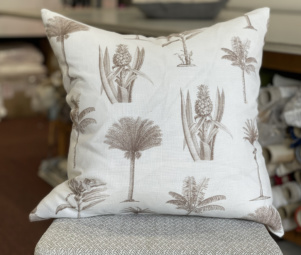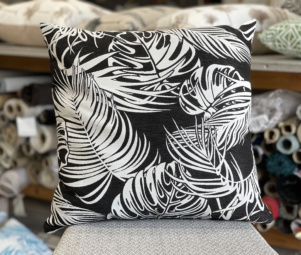Interested in shopping our range? Check out our Cushions!
Blockout Lined & Blockout Coated Curtains
There are two ways to achieve total block out in the construction of a curtain: use blockout coated fabric or make blockout linings for the curtains.
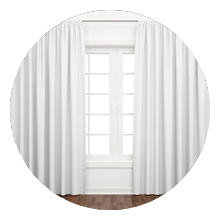
Advantages for blockout curtains over other types of window coverings include:
- Better energy insulation in curtains, especially in winter and even more so if you have a pelmet above the curtain, as they trap warm air and help to prevent heat from escaping through the glass.
- Better light block out as there are no gaps, and even more so if you have a pelmet above the curtain, as this prevents the “halo effect” of light bouncing out above the curtain.
- Acoustics – a room with all hard surfaces and no softness will echo. Curtains will absorb sound.
It is important to realise that any colour curtain can be made to black out the room – even a white fabric. The coating on the back of the fabric or the lining on lined curtains is the element that provides the total block out to the window.
There are two ways to achieve total block out in the construction of a curtain: use blockout coated fabric or make blockout linings for the curtains.
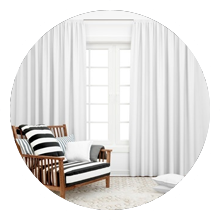
A curtain that is lined has a face fabric facing the room whilst the block out lining sits behind the face fabric closest to the window.
Most of our linings are silicone finished and have a three layer coating in order to provide the block out effect; and finished with a silicone compound which creates a soft agile handle. Silicone linings are better for health due to reduction in dust particles; as well as being mildew resistant. A lined curtain is the best way to make a curtain as it produces the best result. Linings are used for the following reasons, they:
- Provide structure to the curtains by replicating the pleats in the face fabric.
- Protect your investment in the face fabric from perishing in the sun.
- Provide thermal insulation, keeping heat out in summer and warmth in during winter.
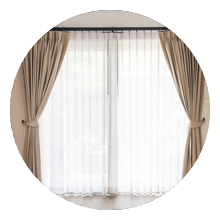
Blockout coated curtains do not have a separate sewn in lining, but rather have the coating applied directly to the face fabric, so there is only one visible layer of fabric.
The advantage of coated fabrics is that the cost of the curtain is reduced as there is no lining and slightly lower labour cost. The downside is that the curtains can show needle holes (stitching line) with the light behind it. This issue can be overcome on the vertical seams by using a little more fabric to create an overlap arm for centre opening curtains; and extending the width of the curtain and tracks passed the window architrave. The horizontal seam (hem) may still show stitch holes if the window is full length with no architrave.
Be careful when selecting coated fabrics – the cheaper ones are cheap for a reason! We only use very supple coated fabrics, which are soft to the touch and make up into well behaved pleats that hold their shape the length of the drop. Some coated fabrics on the market are very stiff and hard – when pleated up they splay out rather than holding their shape the full length of the curtain.


